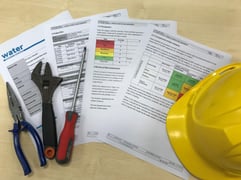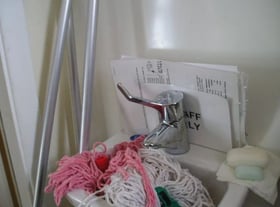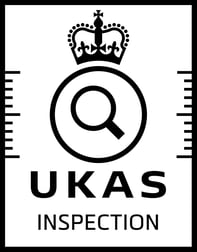If you are a Property Management Company, you will typically take responsibility for the management, maintenance, security, and upkeep of a variety of properties. These properties may include residential, commercial, or industrial sites for which you have daily oversight, usually on behalf of another party or owner.
The maintenance of these properties may include the building fabric, electrical safety, lift maintenance, fire protection, and as this blog explains, water safety.
What does Water Safety / Legionella control mean?
Water safety encompasses many aspects, such as, maintaining water availability for your tenants, scalding risk, but most applicable to this blog, water quality. One such aspect of water quality is bacteriological control, for example, Legionella bacteria, which the Duty Holder is required to manage.
The Health and Safety at Work etc. Act 1974 refers to a person “who has, to any extent, control of premises” to be a Dutyholder, in the case of a Property Management Company, this will be the owner of the properties who have employed you to manage them.
To comply with their legal duties under ACoP L8, the Dutyholder (owner) should appoint a “Responsible Person” to manage the risks of Legionella, which in this example, could be the Property Management Company.
What are the responsibilities of the Duty holder / Responsible Person?
One of the duties of a Dutyholder is to “Identify and assess sources of risk”, this is usually in the form of a Legionella Risk Assessment (LRA). Typically, this duty is given to the Responsible Person to manage and represents one of the five “must haves” under ACoP L8 to keep a record of. The five “must haves” being;
- Appoint a competent person, known as the ‘responsible person’;
- Identify and assess sources of risk (Risk assessment);
- Prepare a written scheme for preventing or controlling the risk;
- Implement, manage and monitor precautions;
- Keep records of the precautions.
The Risk Assessment must be undertaken by a competent person, which could be the Property Management Company themselves an external water hygiene company, or a Legionella Consultant the latter being the most popular approach.
The general contents of a Legionella Risk Assessment are listed in the HSE’s HSG 274 Part 2 document: The Control of Legionella bacteria in hot and cold water systems, Appendix 2.1.
More detail is given in BS 8580-1:2019 Water Quality. Risk Assessments for Legionella Control, Code of Practice but the general idea is the same. All water systems are risk assessed and recommendations are made to either eliminate or minimise the risk.
 The detail from a Legionella Risk Assessment will then allow a written scheme of control to be made, and subsequent monitoring and maintenance programmes. The recommendations from the Legionella Risk Assessment should be actioned accordingly with evidence to prove they have been carried out. The water safety records should be kept and readily available as proof of good Legionella management.
The detail from a Legionella Risk Assessment will then allow a written scheme of control to be made, and subsequent monitoring and maintenance programmes. The recommendations from the Legionella Risk Assessment should be actioned accordingly with evidence to prove they have been carried out. The water safety records should be kept and readily available as proof of good Legionella management.
The LRA should then be reviewed regularly and updated whenever a change of circumstance occurs. The Legionella Risk Assessment should always reflect the water system currently installed.
All water systems require a risk assessment but not all systems require elaborate control measures, simple water systems only require simple risk assessments, and more complex water systems will require more expertise to assess and manage.
How the Property Management Company begins to manage this is very much dependent on how complex their buildings and water systems are. BS 8580-1:2019 should be followed, especially if large water systems with cold water storage cisterns, circulating hot water systems or even cooling towers are to be managed.
However, with a more “basic” water system, perhaps with those found in residential settings e.g., housing, a more proportionate approach can be taken. BS 8580-1:2019 details how simple repeated water systems can be risk assessed, by risk assessing a representative sample of properties on a rolling programme.
HSG 274 Part 2 lists examples of simple control measures that can be applied to these types of water systems, useful when managing a large property portfolio like a housing stock, including:
 Having a Legionella flushing regime - flushing out the system before letting the property;
Having a Legionella flushing regime - flushing out the system before letting the property;- Ensuring the cold water tanks, where fitted, have a tight-fitting lid – to avoid debris getting into the system;
- Setting control parameters (e.g., setting the temperature of the calorifier to ensure water is stored at 60 °C);
- Management of dead legs and blind ends - Making sure any redundant pipework identified is removed;
- Advising tenants to regularly clean and disinfect showerheads.
 Finding a Legionella risk assessor is a simple exercise of searching online, finding a suitable Legionella risk assessor who has the competence to assess your types of water systems is more of a challenge. Risk assessors should provide evidence that they have undertaken the necessary training appropriate to the type and complexity of the water system being assessed.
Finding a Legionella risk assessor is a simple exercise of searching online, finding a suitable Legionella risk assessor who has the competence to assess your types of water systems is more of a challenge. Risk assessors should provide evidence that they have undertaken the necessary training appropriate to the type and complexity of the water system being assessed.
Risk assessment companies may also be formally assessed by independent organisations such as the Legionella Control Association or UKAS, which may help Property Management Companies commission an appropriate Legionella risk assessor.
Further reading> Facilities Management guide to Legionella risk
Feel free to reach out if you have any questions about this blog or if you would like to consult with one of our experts for further advice on water hygiene.
Editors Note: The information provided in this blog is correct at the date of original publication – November 2022 (Revised August 2024)
© Water Hygiene Centre 2024









